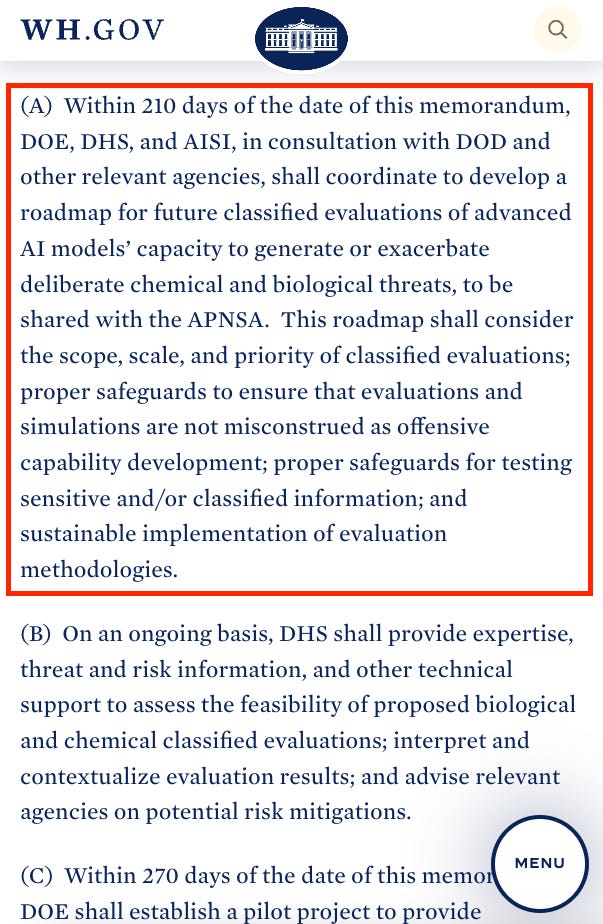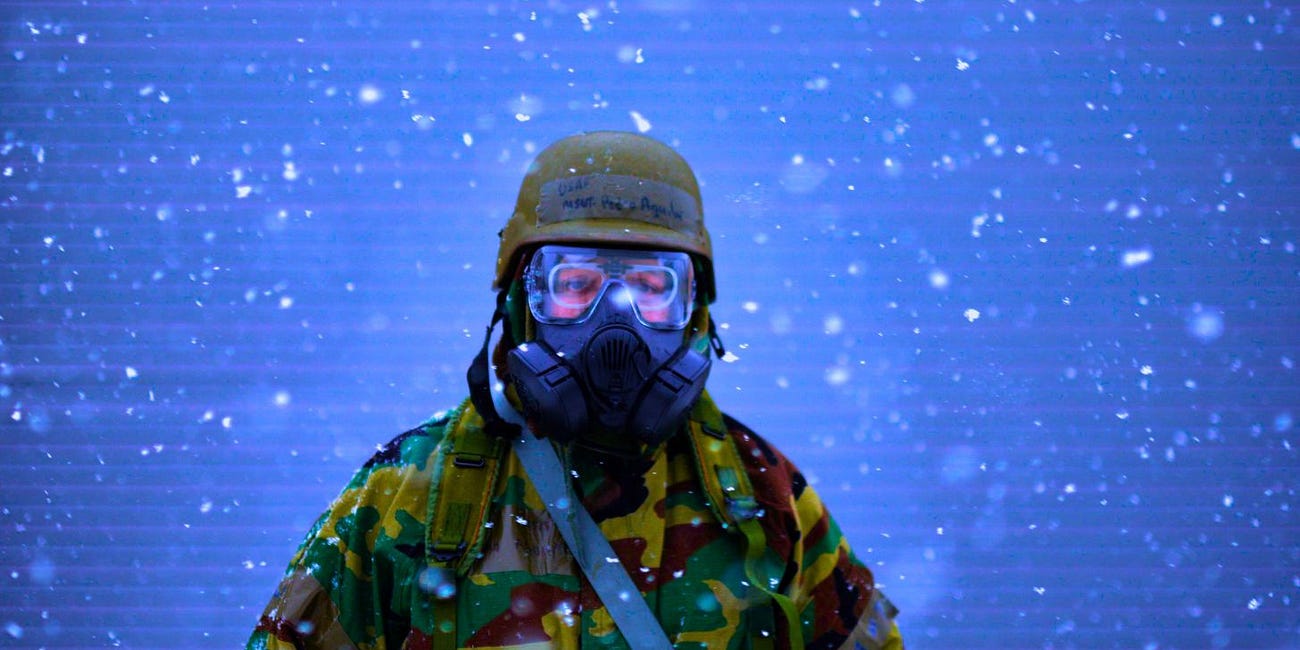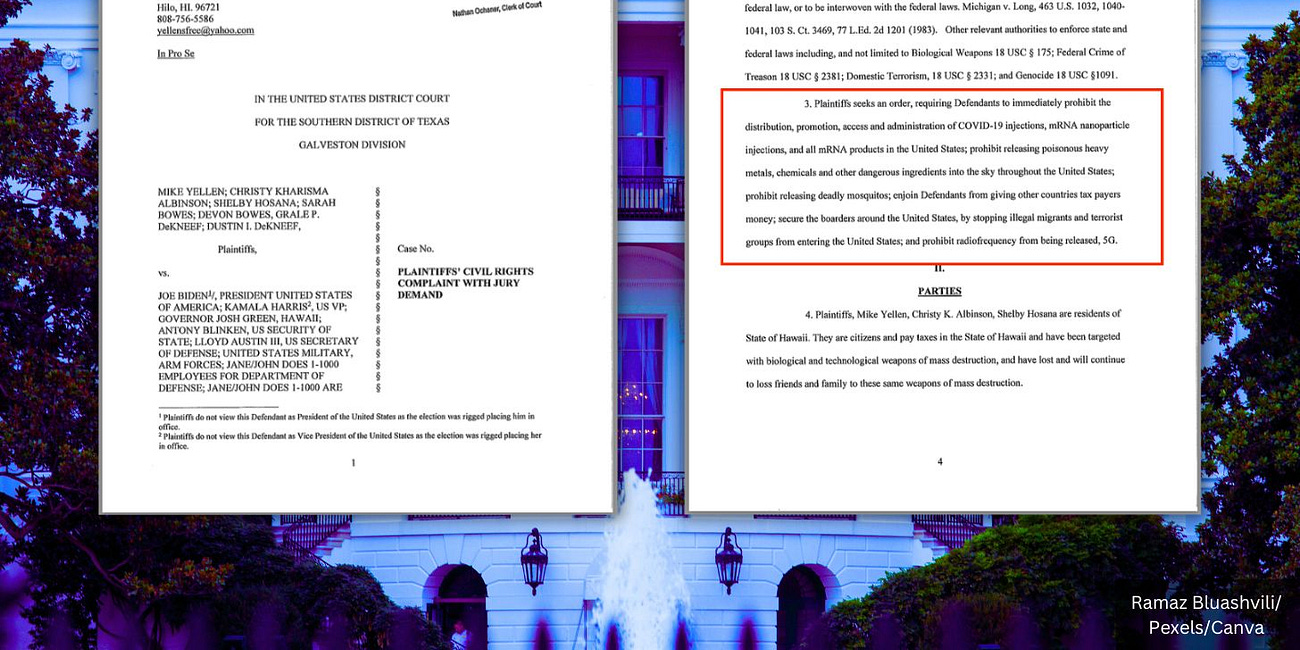U.S. Gov't Quietly Pursues AI Capabilities for Bioweapons Development: White House Memo
Memorandum reveals plans for "classified" evaluations on AI's potential to accelerate biological and chemical weapon capabilities.

A recent White House memorandum reveals that the U.S. government is quietly exploring how artificial intelligence (AI) could be used to advance and control “biological and/or chemical weapons.”
Follow Jon Fleetwood: Instagram @realjonfleetwood / Twitter @JonMFleetwood / Facebook @realjonfleetwood
The plans involve the Department of Energy, Department of Homeland Security, Department of Defense, National Science Foundation, Advanced Intelligence Systems Institute, and intelligence agencies like ODNI and NSA.
The memorandum, dated October 24, 2024, emphasizes AI’s role in assessing risks linked to national security, specifically in areas involving high-stakes technologies.

Within these directives, there are hints that AI could be explored for capabilities beyond defense, touching on domains that raise pointed questions about the future applications of this technology.
One section of the memorandum explicitly states, “The United States Government shall advance classified evaluations of advanced AI models’ capacity to generate or exacerbate deliberate chemical and biological threats.”
This directive reveals a clear focus on examining how AI could potentially contribute to or amplify the development of biological and chemical weapons.
The wording implies both an offensive and defensive strategy, where AI is not only seen as a tool to counter such threats but also as a capability that may extend to creating them—a possibility that opens up significant ethical and security debates.
In an even more specific directive, the memorandum mandates that “Within 210 days of the date of this memorandum, DOE, DHS, and AISI, in consultation with DOD and other relevant agencies, shall coordinate to develop a roadmap for future classified evaluations of advanced AI models’ capacity to generate or exacerbate deliberate chemical and biological threats.”
The planned roadmap highlights a structured approach to understanding how AI models could accelerate or influence capabilities in these hazardous domains.
The cross-agency collaboration here suggests a well-coordinated initiative that could be as focused on managing these technologies as it might be on potentially advancing them.
Additionally, the memorandum tasks the Advanced Intelligence Systems Institute (AISI) with “voluntary preliminary testing of at least two frontier AI models prior to their public deployment or release to evaluate capabilities that might pose a threat to national security.”
The document lists these AI models’ ability to “accelerate development of biological and/or chemical weapons” as one of the capabilities under assessment.
The decision to test AI models for their potential to expedite bioweapons development subtly suggests that these models may serve multiple interests, including those that could be strategically applied in fields previously deemed off-limits.
This proactive approach, ostensibly aimed at protection, also leaves room for the possibility of exploring dual-use applications.
Significantly, the memo acknowledges concerns the technology could be manipulated by “malicious actors.”
“AI systems may reveal aspects of their training data—either inadvertently or through deliberate manipulation by malicious actors—and data spillage may result from AI systems trained on classified or controlled information when used on networks where such information is not permitted,” the memo reads.
Additionally, “foreign state competitors and malicious actors may deliberately undermine the accuracy and efficacy of AI systems, or seek to extract sensitive information from such systems.”
These revelations from the White House memorandum highlight a shifting focus within U.S. national security strategy, where artificial intelligence is not only being deployed to enhance defense capabilities but is also being evaluated for its role in advancing powerful technologies with far-reaching impacts.
As the government proceeds with these evaluations, questions naturally arise around the ethical and practical boundaries of AI’s place in national defense—and potentially, in offensive applications.
Follow Jon Fleetwood: Instagram @realjonfleetwood / Twitter @JonMFleetwood / Facebook @realjonfleetwood
DHS Warns of State-Sponsored, AI-Engineered 'DNA Modification to Develop Biological Weapons to Target Specific Groups' of Americans: Homeland Threat Assessment
The U.S. Department of Homeland Security’s (DHS) 2025 Homeland Threat Assessment (HTA) released earlier this month is raising the alarm about the development of “biological weapons” utilizing “DNA modification” that can target “specific groups” of Americans.
American Bioweapons: Then & Now
The United States had an extensive offensive biological weapons program stretching back at least to World War II and the Cold War era.
Treaty 'Loophole' Allows World Governments to Develop Deadly Bioweapons Like COVID and Corresponding Vaccines: Yale Professor (Video)
The ‘Convention on the Prohibition of the Development, Production and Stockpiling of Bacteriological (Biological) and Toxin Weapons and On Their Destruction,’ known as the “Biological Weapons Convention” (BWC), was opened for signature in April 1972 and took effect in March 1975.
Biden Admin Accused of ‘Murder,’ ‘Treason,’ ‘Genocide,’ and Use of ‘Weapons of Mass Destruction’ with COVID-19 Shots, 5G, Chemtrails, Mosquitos: Texas Lawsuit
A monumental lawsuit filed on October 15, 2024, in the Southern District of Texas accuses Joe Biden, Dr. Rochelle Walensky, Alejandro Mayorkas, and other top officials of “murder,” “treason,” “genocide,” and facilitating the use of weapons of mass destruction.













What is the federal law used to authorize this in the Executive? And Appropriations? Otherwise, this is an impeachable offense.
The deep state always makes mistakes. In fact, more so at these levels than ever before. If A.I. cannot even keep up with emerging A.I. then then it's time for we the people to take the reins and give A.I. a taste of pure randomness. This means sabotage. Random acts of locking and switching cell phones with others we trust. Give A.I a run for its money. It cannot self-correct what it hasn't learned. We will be the new creative teachers, here while A.I. digs itself a nice black hole to look into. Imagine that ... "WE the People!" Have we forgotten who holds the purse strings?
So in essence, please don't fall for their traps. They desperately need us to bring about their evil deeds. Quantum Mechanics is an exact science ... Here Q.M. tells us of an 'Observer Effect'. This is where we come in! See it, believe it ... It's real! It's this simple. These elite threaten the scientific community with their jobs if they don't tell us that Q.M. is not understandable. The truth is ... It is easy to understand. They just don't want us knowing how they use it against us. From here I will recommend Robert's Substack ... "Is Pi a Supernatural Creation?" ... "Linear Causality" ... "I'll Have a Cat 5 Hurricane with a side of flotation Devices" ... "Will the Real Bufett Please Stand" ... "Clockwork 137. A Prime Numbered Universe" ..................................... Until we get it! .................................